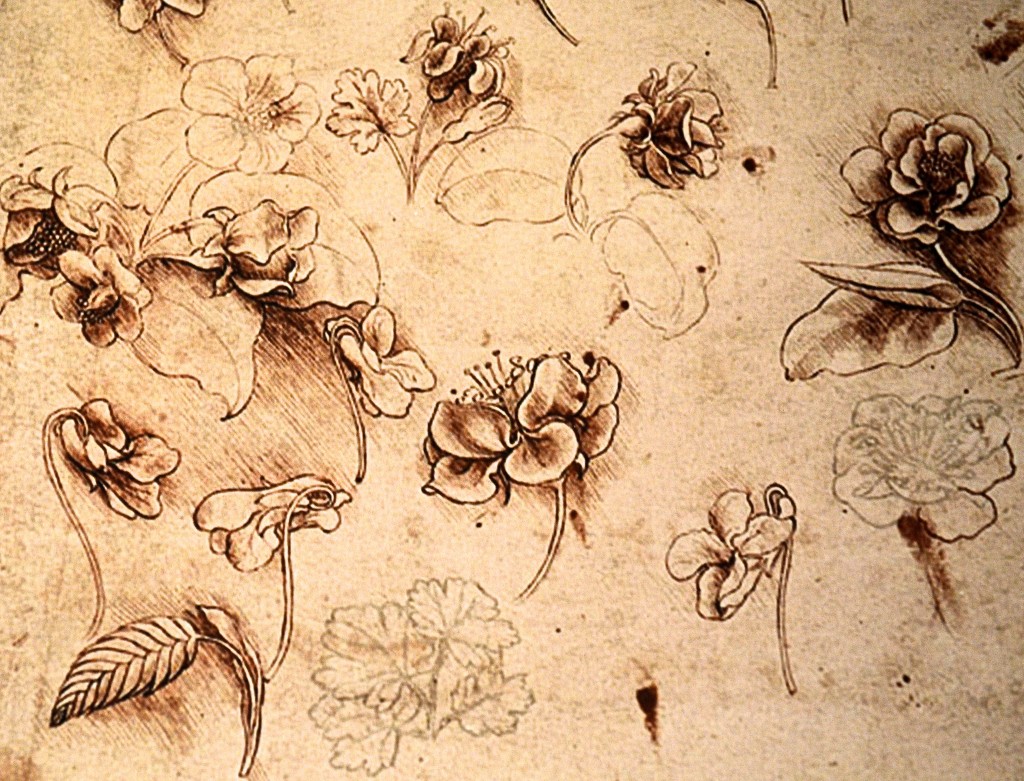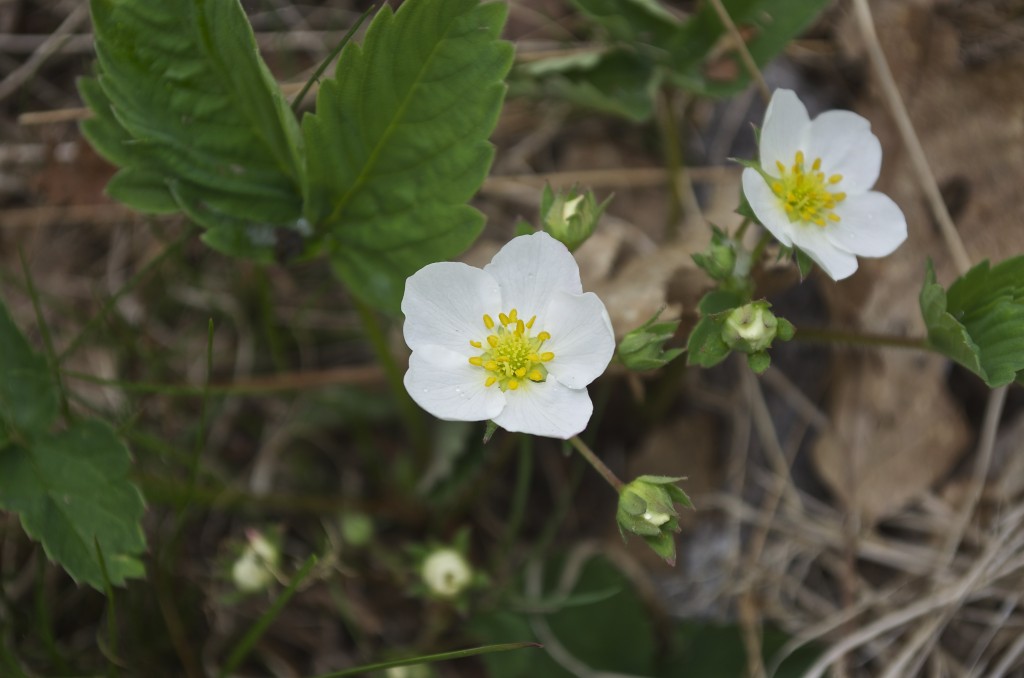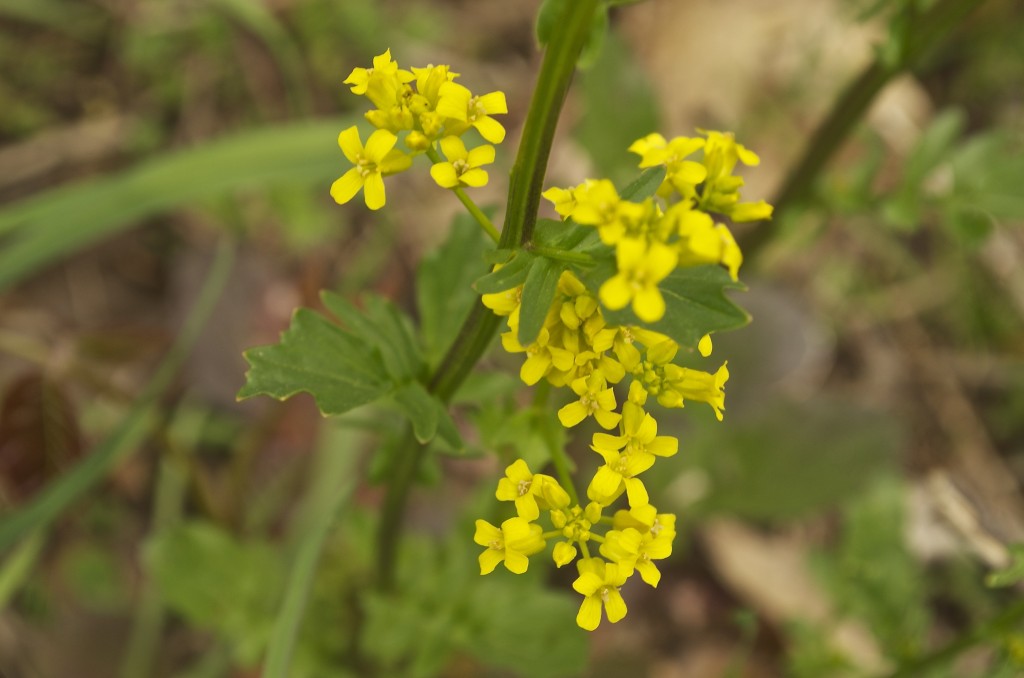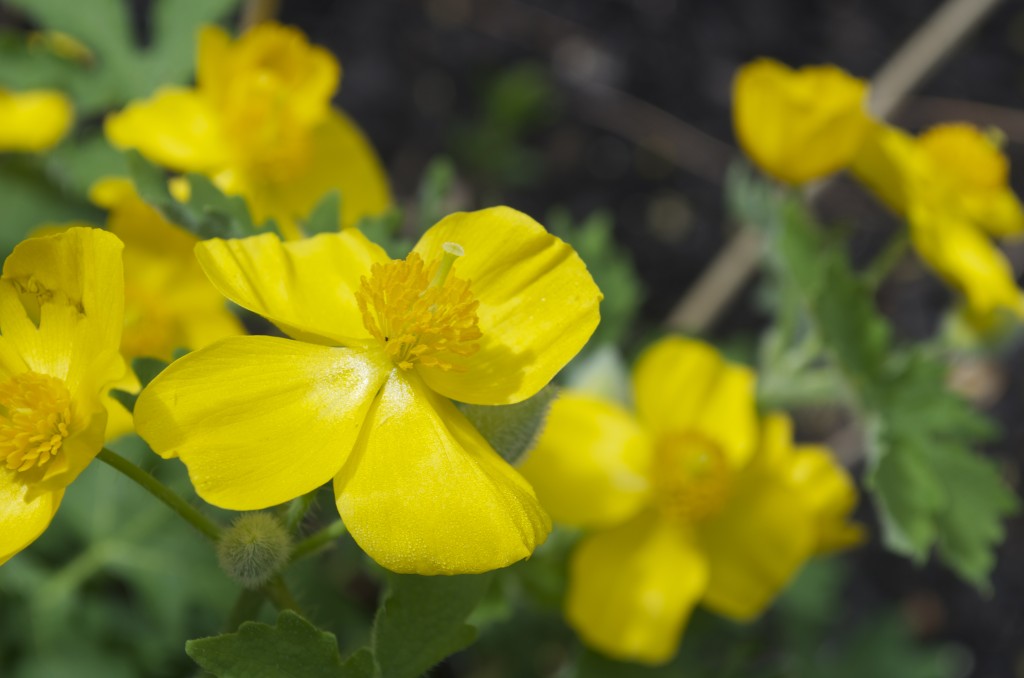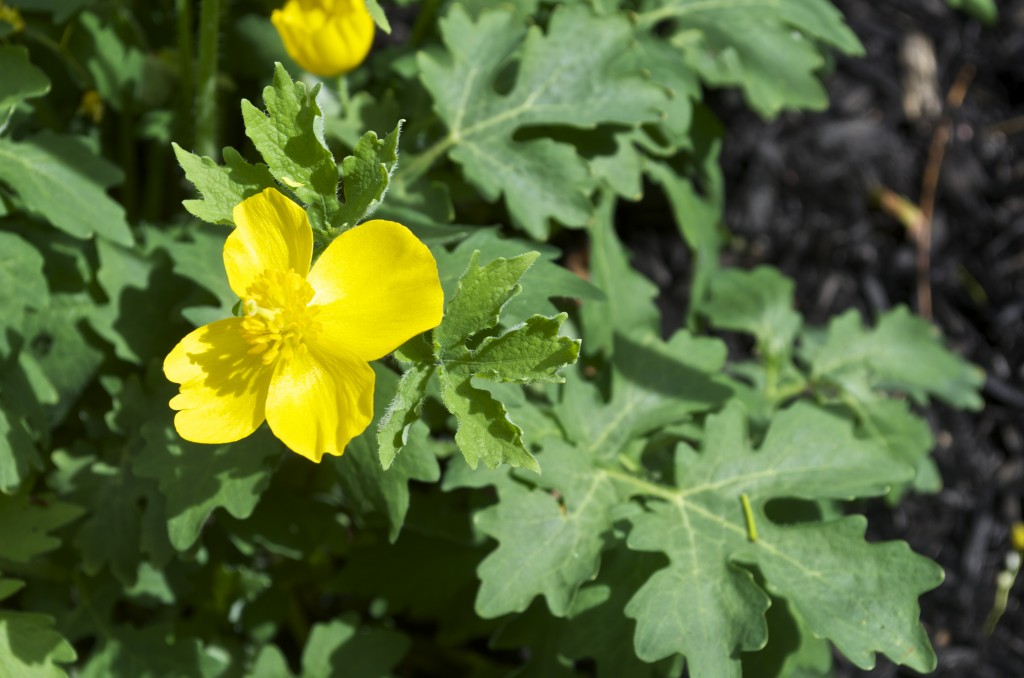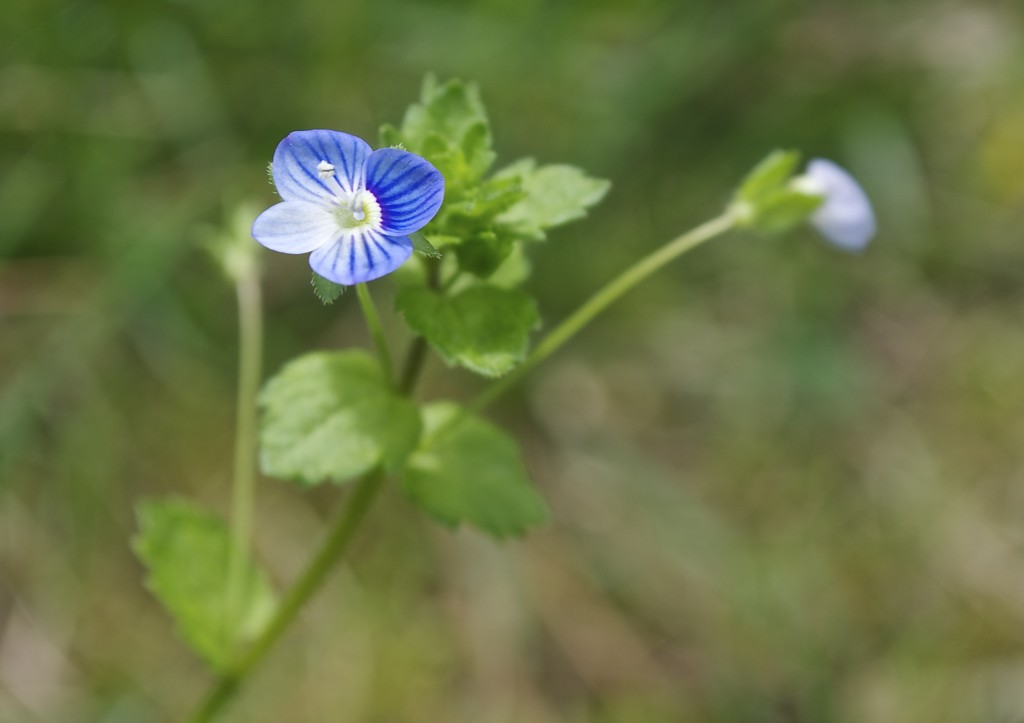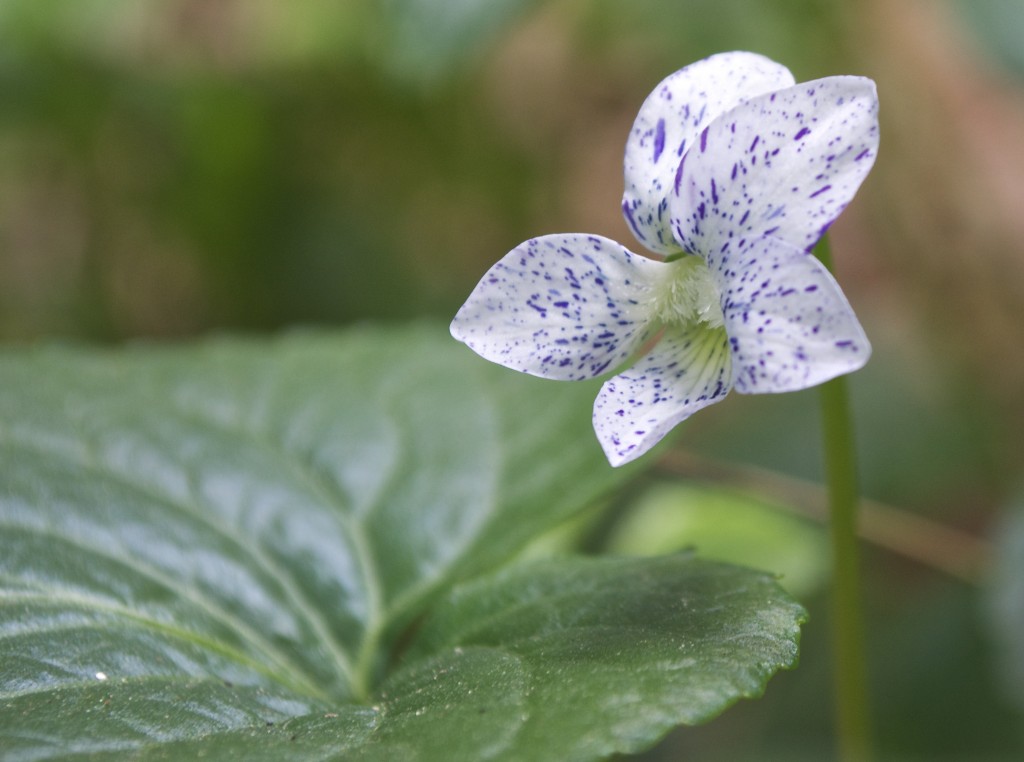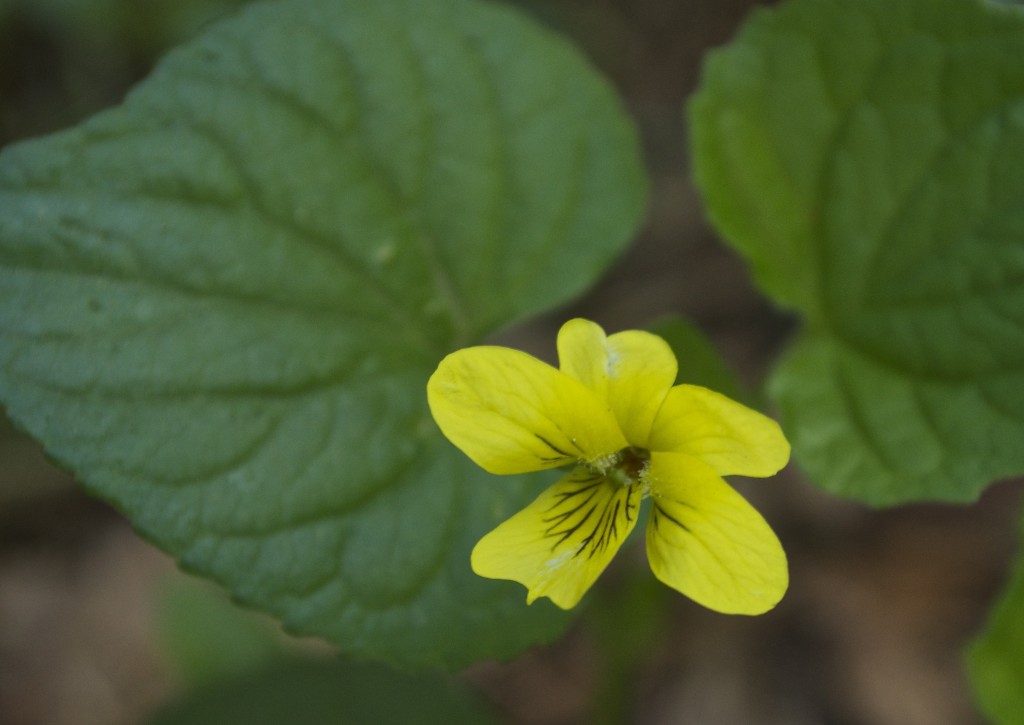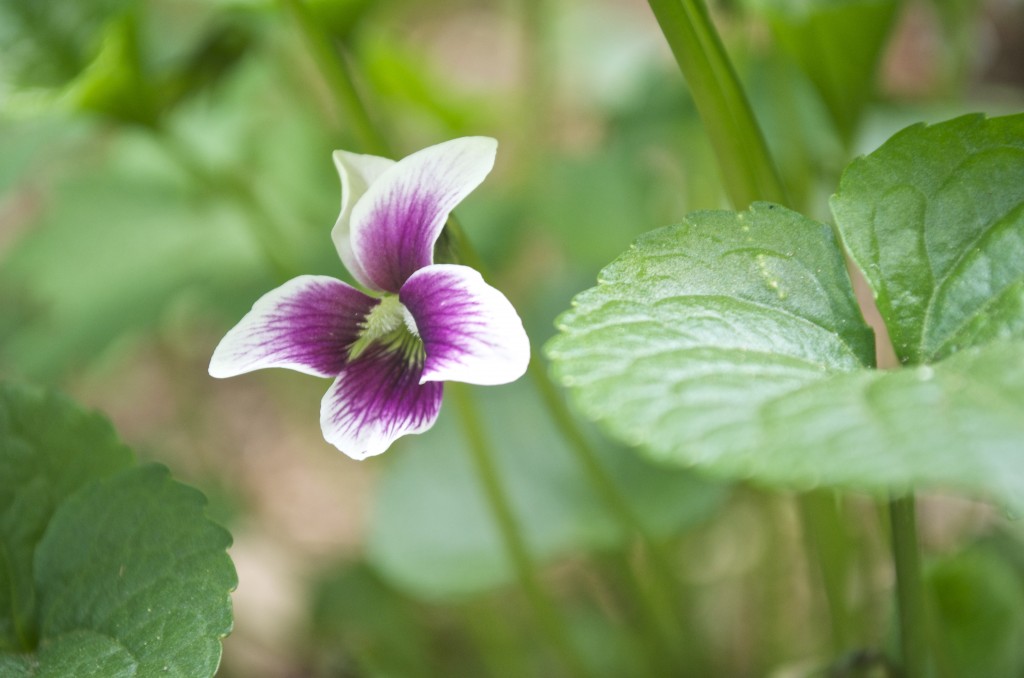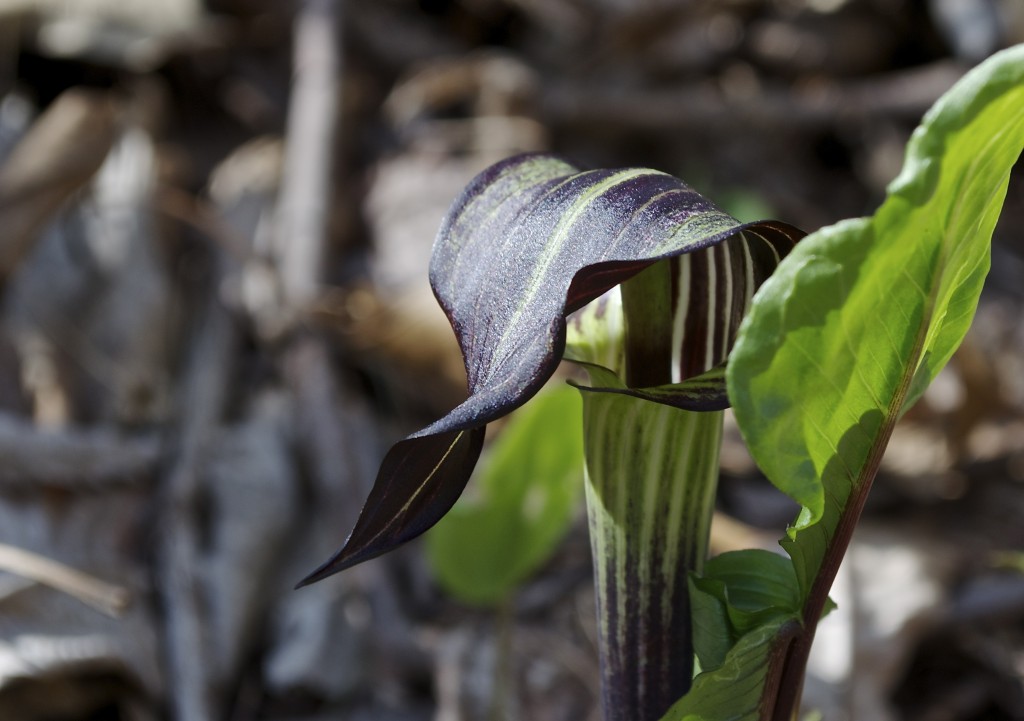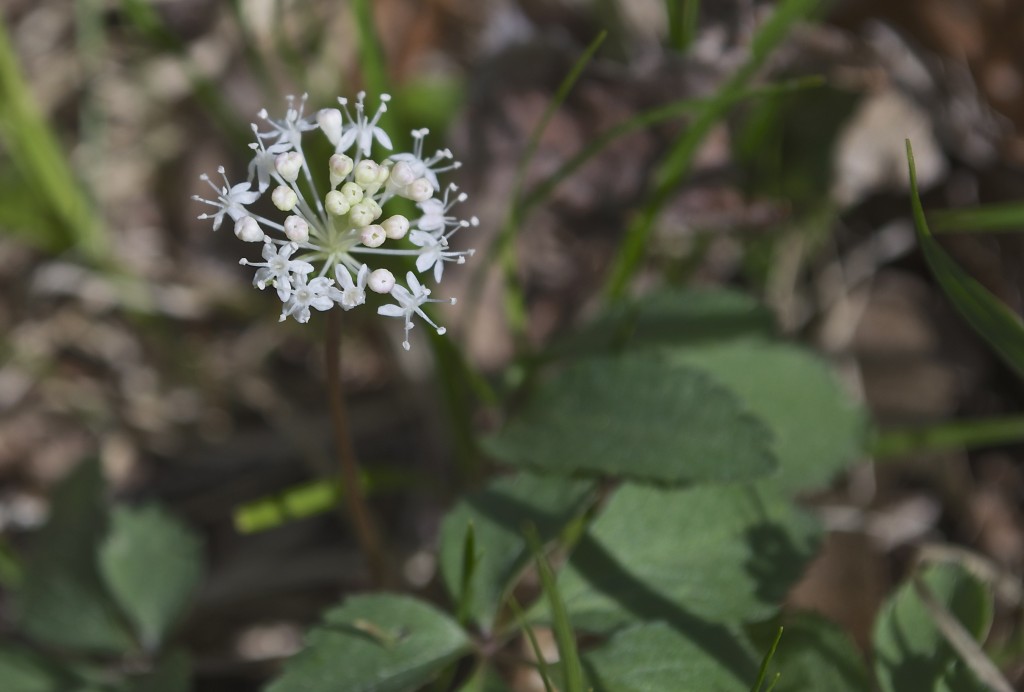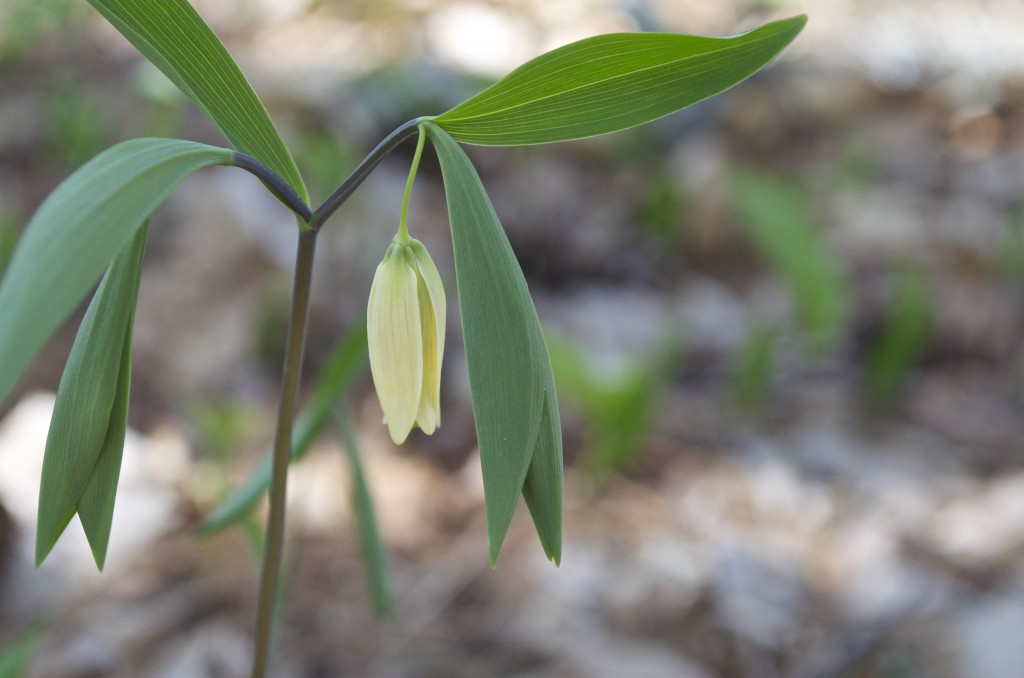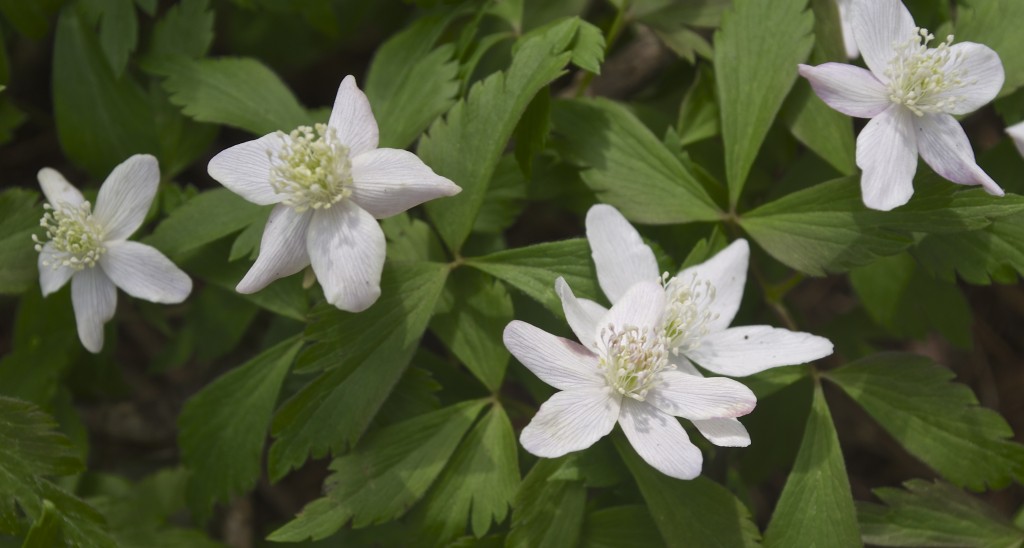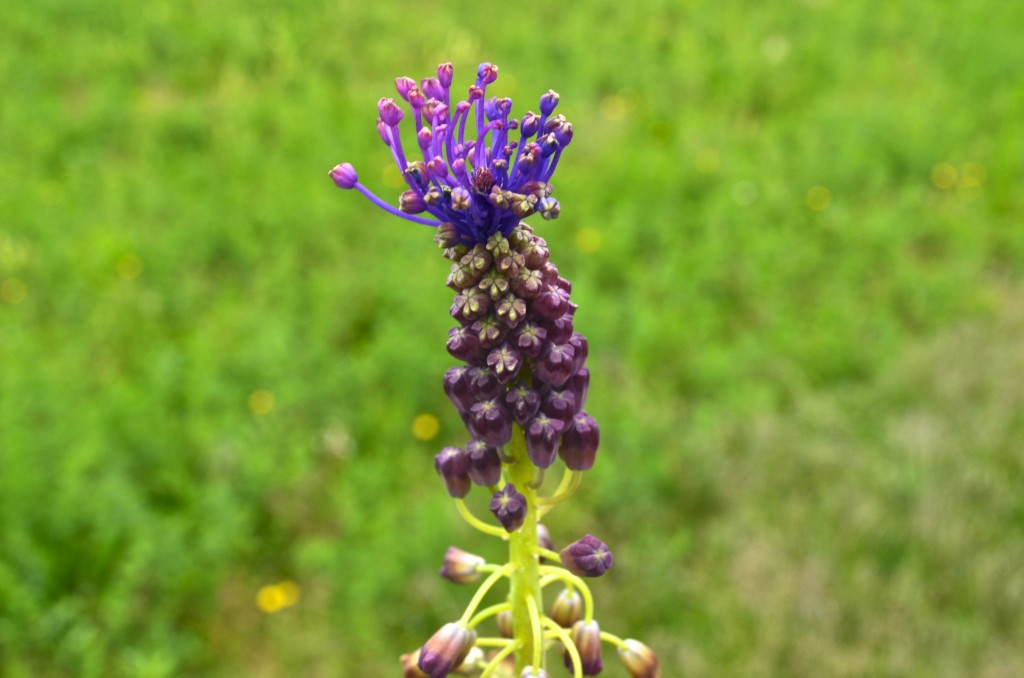 I didn’t make a study of their wildflowers, but I had to notice this one! I can’t figure out what it is, maybe a kind of lavender?
I didn’t make a study of their wildflowers, but I had to notice this one! I can’t figure out what it is, maybe a kind of lavender?
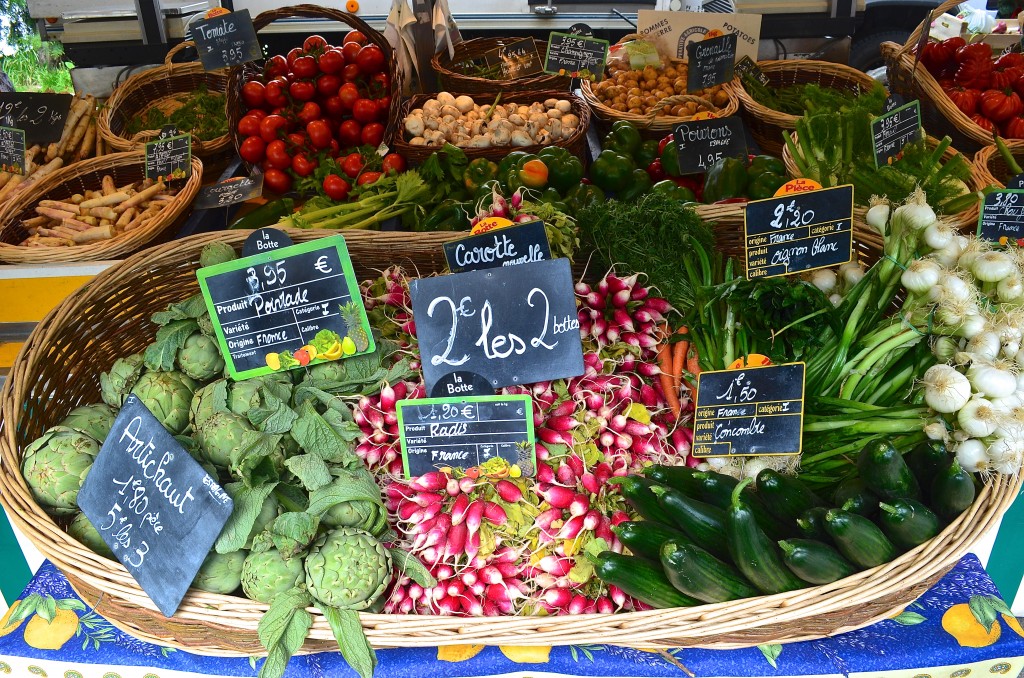
And on another botanical note, I can tell you that in the small town open-air markets and on the sidewalks of Paris, they have splendid produce stands. They look beautiful and everything seems to be perfectly ripe and ready to eat.
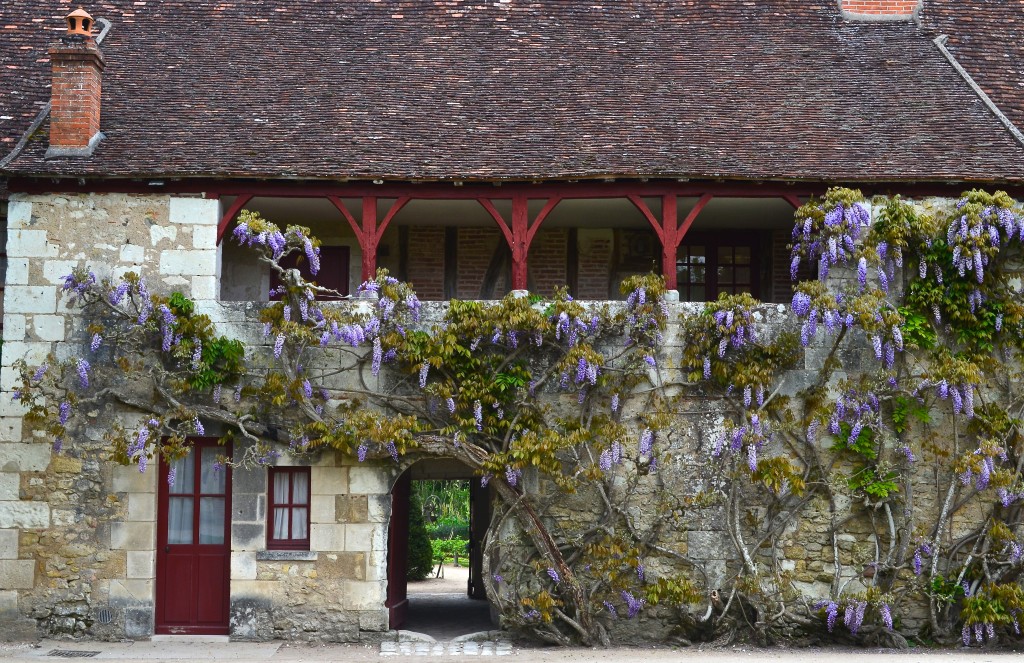
And I can tell you they love wisteria. And lilacs.
Also, we visited the chateau where Leonardo da Vinci spent the last three years of his life, and here is one of his drawings… we can recognize that he was out in the yard drawing the violets… peonies or roses? fuschia?
